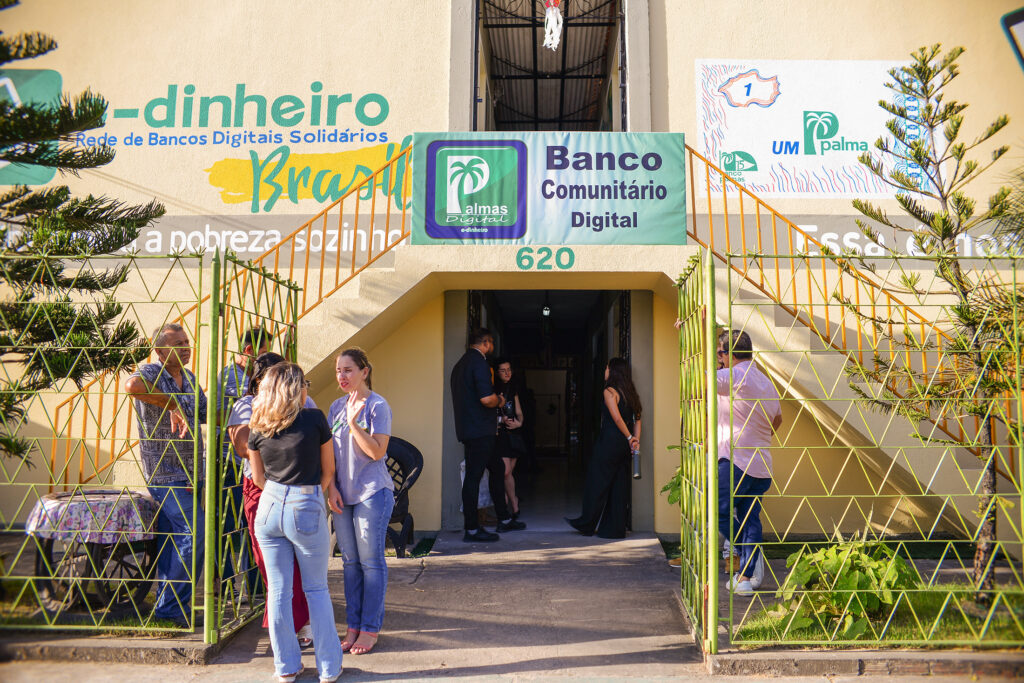
Embedded finance means integrating financial tools directly into platforms that aren’t financially focused, like apps. In today’s evolving digital world, where apps and smartphones are nearly ubiquitous, these kinds of financial tools are widespread and sometimes so seamlessly integrated into online platforms as to go unnoticed.
With the click of a button, vacation-goers can easily add insurance to their rental car. Online shoppers eyeing an expensive item can opt to pay in multiple installments over time, instead of upfront.
In emerging markets, these innovations are equally as efficient. In Bolivia, for example, a family-run cheese business makes digital loan repayments through an app. A rice farmer in rural India can access credit and chat directly with her loan officer using her phone. And refugee business owners in Uganda are linking their bank accounts to an online marketplace.
These are all examples of embedded finance.
Small-scale businesses form the backbone of developing economies and are engines for job creation in these markets. For these businesses, embedded finance solutions make achieving secure livelihoods and lives free from poverty possible.
But what is embedded finance?
The definition of embedded finance is the integration of financial services into a non-financial context, such as a social media app or an online marketplace.
With embedded finance, users can access financial tools and services like credit, payments, savings, and insurance alongside a platform’s other offerings.
For this reason, embedded finance is often thought of as a “one stop shop.” It lets users access financing in the same place as other services, eliminating the need to switch between apps or websites.
What are examples of embedded finance platforms?
A common example of embedded finance is the “buy now, pay later” option offered on many e-commerce platforms. This uses an embedded credit product at the point of purchase. It allows users to spread their purchase over multiple payments, making it easier to buy costly items.
Another example of embedded finance is Field Intelligence, a startup supported by Accion. It helps pharmacies in Kenya and Nigeria digitize their supply chain operations and manage their inventory. Field Intelligence offers a product called Shelf Life, which allows users to pay for their inventory as they sell it. A game-changer for small pharmacies, this innovation means business owners can keep up with fluctuating customer needs.
In India, the business-to-business marketplace platform Agrizy connects smallholder farmers to small-scale agri-processors and buyers around the globe. With Accion support, Agrizy is targeting the region’s agricultural financing gap by embedding financial services directly into its digital platform, offering supply chain finance and working capital loans. Agri-processors can seamlessly access critical financing as they shop.
And, in Latin America, innovative startup Henry is tackling the challenge of unemployment in the region by offering virtual coding courses. Students pay for courses using an income-sharing agreement — a form of embedded financing that lets students pay for their training only once they have secured employment after graduation.
What is the impact of embedded finance?
Globally, significant progress has been made toward financial inclusion, with 75 percent of adults in low-and middle-income countries now owning a financial account. But there are still 1.6 billion people who remain left out or poorly served by the global financial system, according to new data from the World Bank.
Embedded finance is an important pathway to expand inclusion as it democratizes financial services. It lowers the barrier of entry for underserved populations who wouldn’t typically have access to the financial tools necessary to grow their businesses, insure their products, and save for their futures.
When companies integrate embedded finance into their products, it’s a win-win for both business and customer. A seamless and efficient user experience builds trust, increasing usage and retention rates, and positively impacts the platform’s revenue.
For underserved populations like smallholder farmers, micro-entrepreneurs, and rural women, embedded finance products also create a digital footprint that can unlock other opportunities. A small business owner taking and repaying a loan via digital platform, for example, creates a record of responsible financial behavior. This improves their chances of qualifying for loans or other important products in the future.
Embedded finance marks a departure from the traditional banking model, which can be time-consuming, resource-intensive, and out of reach for many. In developing economies, especially, embedded finance on digital services eliminates the need to travel vast distances to a bank branch. This saves time for income-generating activities, like tending to a farm or managing a small business storefront.
How Accion works with embedded finance
Accion’s work in embedded finance spans multiple geographies and targets populations from MSMEs in developing economies to marginalized groups such as refugees. For embedded finance to enact meaningful change for the underserved communities, it must be responsible, affordable, and fair.
Accion works alongside local partners to design, test, and deploy affordable digital solutions that strengthen clients’ financial health. A sizeable portion of this work involves supporting fintech startups to embed inclusive finance into their platforms, improving operational efficiencies, and enhancing access to underserved populations across Asia, Africa, and the Americas.
Embedded finance has a place at the core of Accion’s mission to create a fair and inclusive economy where underserved people have quality financial choices and opportunities to improve their economic well-being.
See the impact of embedded finance in action for refugee women in Uganda.
Frequently Asked Questions
Embedded finance means integrating financial services like payments, credit, savings, or insurance directly into non-financial apps and platforms people already use. This allows individuals and small businesses to access finance without needing to visit a bank or download separate apps.
One example is Accion partner Field Intelligence, which helps small pharmacies in Kenya and Nigeria access “pay-as-you-sell” inventory financing through its Shelf-Life platform, embedded directly into their supply chain workflows.
Embedded finance works through partnerships where licensed financial institutions provide regulated services, while digital platforms deliver them directly to users. These integrations are typically made possible through APIs that securely move data and process transactions in the background.
For example, digital platforms that serve MSMEs can partner with financial service providers to embed credit scoring and loan approvals directly into the tools merchants already use, reducing friction and expanding access.
Examples include Buy Now, Pay Later at checkout, digital wallets inside ride-hailing apps, and insurance offered during travel bookings. In all cases, the financial service appears seamlessly within everyday experience.
This includes companies like Accion partner Agrizy, which embeds working capital financing into its digital marketplace, helping small agri-processors in India grow their businesses. Learn more about Agrizy here.
Embedded finance increases convenience for users and improves engagement and revenue for businesses. It reduces friction by letting people complete financial actions within platforms they already trust. Small retailers using embedded inventory financing have steadier supply cycles, stronger cash flow, and more predictable day-to-day operations.
Embedded finance lowers barriers by bringing essential financial services into familiar digital environments, especially for people who may not have access to traditional banking. It helps underserved individuals build financial histories that can unlock future opportunities.
For example, Accion partner Henry in Latin America allows students to pay tuition only after securing employment, reducing upfront cost barriers and expanding access to opportunity. You can learn more about Henry’s model here.
BNPL is a type of embedded lending that allows customers to split purchases into multiple payments, over time, directly at checkout. The approval and repayment happen within the same platform, making it seamless for the user.
Banking-as-a-Service provides the regulated banking infrastructure that platforms use to embed financial services. It enables companies to offer accounts, payments, or credit without becoming banks themselves.
Open banking provides ways for customers to securely share financial data across apps, while embedded finance integrates actual financial products into non-financial platforms. In short, open banking moves data, while embedded finance moves the financial service itself.
Embedded insurance means offering insurance coverage directly within the purchase or service experience instead of through a separate provider. For example, travelers can add flight or rental-car insurance at checkout with one click.
In emerging markets, similar models help small businesses and farmers access affordable insurance through the digital platforms they already use — protecting livelihoods and reducing financial risk. You can read more about these embedded insurance models here.
Embedded payments are digital payment capabilities built directly into a platform’s workflow, allowing users to pay instantly without switching apps or using external gateways. Ride-hailing and delivery apps, for instance, process in-app payments seamlessly at trip completion.









